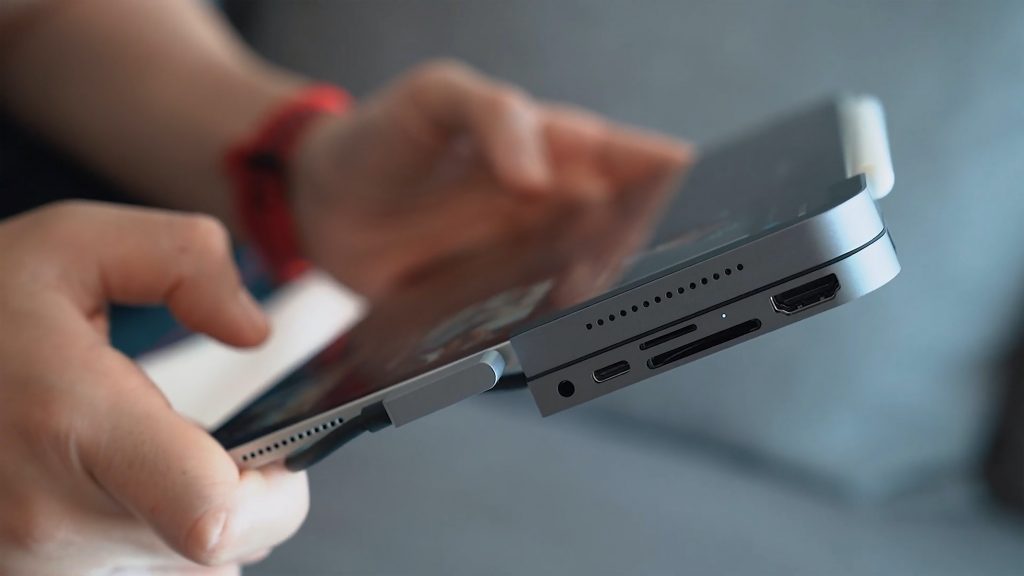Carpal tunnel syndrome is a common condition that can cause pain, tingling, and numbness in the hand and arm. It can be caused by a variety of factors, including repetitive motions and extended periods of time spent typing on a keyboard. In this article, we will explore whether or not low-profile keyboards are better for people with carpal tunnel symptoms. We will discuss the advantages and disadvantages of using a low-profile keyboard, as well as other techniques for reducing the risk of developing carpal tunnel syndrome.
Overview of low-profile keyboards
A low-profile keyboard is a type of keyboard designed to reduce key travel distance and provide a more comfortable typing experience. These keyboards are usually thinner than standard keyboards and feature a low-profile or chiclet style key design. Low-profile keyboards are becoming increasingly popular as laptop manufacturers move away from standard keyboards and switch to thinner, low-profile designs.
Low-profile keyboards are designed to reduce the amount of force required to press a key, providing a more comfortable typing experience. The keys are shorter and flatter than standard keys, which reduces the distance a key has to travel when pressed. This helps reduce finger fatigue and pain, making it easier to type for longer periods of time.
Low-profile keyboards also offer a number of other benefits. They have a sleeker, more modern look and feel, which is often preferred by users. They are also more resistant to dust, dirt, and spills, making them ideal for use in harsh environments. Additionally, they are often more durable and have longer lifespans than standard keyboards.
Low-profile keyboards are becoming increasingly popular as laptop manufacturers move away from standard keyboards and switch to thinner, low-profile designs. They are also becoming more common in desktop keyboards as users look for a more comfortable typing experience. If you’re in the market for a new keyboard, a low-profile keyboard is definitely worth considering.
Advantages and Disadvantages of Low-Profile Keyboards
Advantages of Low-Profile Keyboards
Reduced Wrist Strain
Low-profile keyboards are designed with ergonomics in mind. They are designed to reduce wrist strain and fatigue, as the keys are lower and closer to the user’s fingertips. This makes typing and gaming easier and more comfortable. Additionally, the keys typically require less force to press, which further reduces strain on the wrist.
Increased Comfort
Low-profile keyboards provide increased comfort and ease of use. Their slim design allows users to type and game without having to contort their hands and wrists into uncomfortable positions. Additionally, the keys are closer to the user’s fingertips, reducing the amount of time and effort needed to type.
Reduced Risk of Carpal Tunnel
Low-profile keyboards are designed to reduce the risk of carpal tunnel syndrome. Since the keys are lower and closer to the user’s fingertips, users can type and game with less strain on their wrists and hands. This reduces the risk of carpal tunnel syndrome, which is a painful condition caused by repetitive motion of the wrist. Additionally, the lower profile of the keys reduces the amount of force required to press them, further reducing the risk of carpal tunnel syndrome.
Disadvantages of Low-Profile Keyboards
Low-profile keyboards are becoming increasingly popular due to their slimmer design, but they are not without their disadvantages.
Reduced tactile feedback
One of the main disadvantages of low-profile keyboards is their reduced tactile feedback. This type of keyboard has shallower keys with less travel, which can make typing less comfortable and less accurate. This can be particularly noticeable with key combinations such as shift or control, as the user may not feel the full travel of the key.
Increased cost
Another disadvantage of low-profile keyboards is the increased cost. These keyboards tend to be more expensive than their traditional counterparts, and this cost can be significant for budget-conscious consumers. Additionally, low-profile keyboards may require a separate keypad or specific key caps to provide a more comfortable typing experience, which can add to the overall cost.
Also Read: Are Leopold Keyboards Good?
Conclusion
In conclusion, low-profile keyboards are an excellent choice for those suffering from carpal tunnel or those at risk of developing it. The low profile keys are much easier on the wrists, allowing for more comfortable typing and less stress on the joints. Low-profile keyboards also come in a variety of styles, so you can find one that fits your needs and preferences. Ultimately, the best choice for carpal tunnel sufferers is to try out a low-profile keyboard and see if it offers the relief they need.
Frequently Asked Questions
What is a low-profile keyboard?
A low-profile keyboard is a keyboard that is designed to be more ergonomic and have a shorter key travel distance than a traditional keyboard. It is also designed to be more comfortable and reduce the strain on your wrists and hands.
How does a low-profile keyboard help with carpal tunnel syndrome?
The shorter key travel distance reduces strain on your wrists and hands which can help reduce the symptoms associated with carpal tunnel syndrome. Low-profile keyboards also help to maintain a neutral wrist position, which can help reduce strain.
Are low-profile keyboards more expensive than traditional keyboards?
Generally, low-profile keyboards are more expensive than traditional keyboards. However, the cost of the keyboard should be weighed against the potential benefits of reducing the risk of carpal tunnel syndrome.
Are there any other benefits to using a low-profile keyboard?
Yes, low-profile keyboards are also quieter than traditional keyboards and they are generally more comfortable to use. Additionally, they are often more ergonomic and can help reduce fatigue and strain on your wrists and hands.
What should I look for in a low-profile keyboard?
When shopping for a low-profile keyboard, you should look for one that has adjustable key height, a comfortable wrist rest, and a design that allows for a neutral wrist position. Additionally, make sure to look for a keyboard with good tactile feedback and that is easy to type on.




